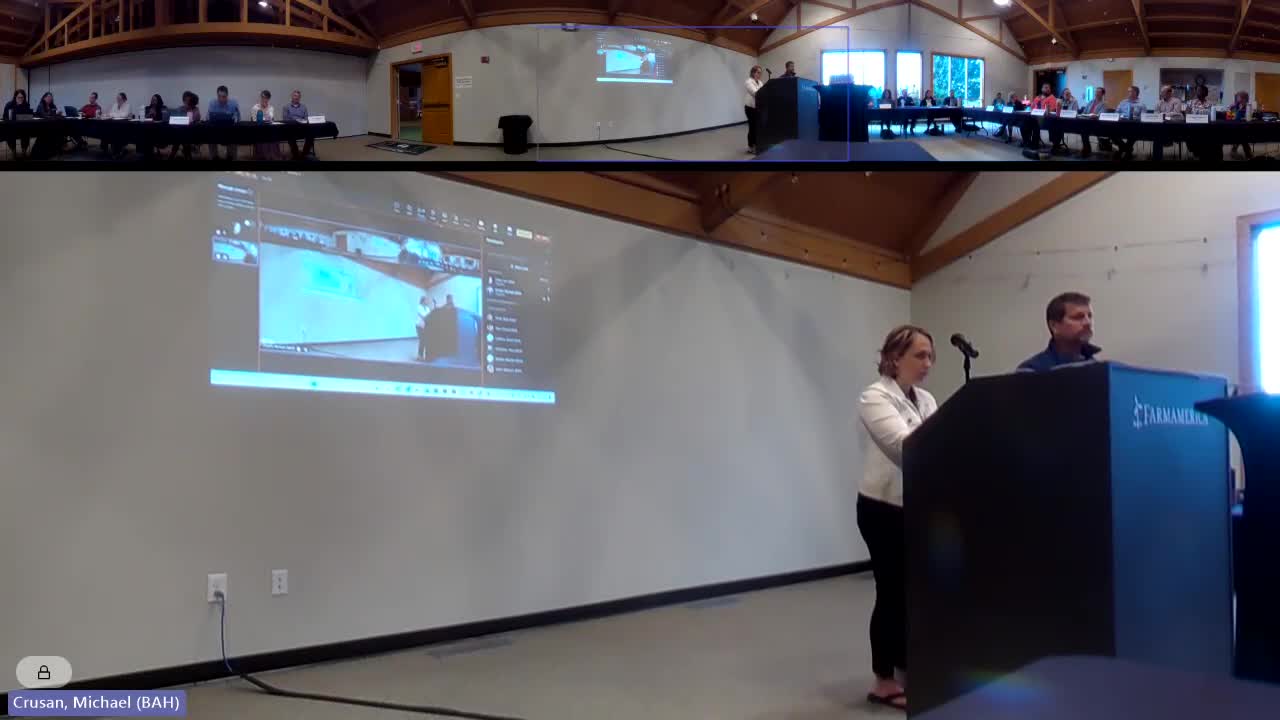State Officials Discuss Foreign Animal Disease Communication and Upcoming Legislative Budget Session
September 11, 2025 | Board of Animal Health, Agencies, Boards, & Commissions, Executive, Minnesota
This article was created by AI summarizing key points discussed. AI makes mistakes, so for full details and context, please refer to the video of the full meeting. Please report any errors so we can fix them. Report an error »

The Minnesota Board of Animal Health's quarterly meeting on September 11, 2025, highlighted critical discussions surrounding foreign animal diseases and the need for a unified communication strategy among states. A key point of contention arose regarding the classification of certain parasites as foreign animal diseases, with members emphasizing the importance of accurate categorization for effective management and reporting.
One board member raised concerns about the complexities of defining these pests, noting, "It's a weird thing to think about because it's a pest." This discussion underscored the challenges faced in addressing infestations that can devastate livestock populations while not fitting neatly into traditional disease categories. The board confirmed that these issues are indeed reportable, indicating a need for vigilance and coordination.
Further discussions focused on the communication dynamics between states and federal agencies, particularly the USDA. As new personnel step into roles previously held by seasoned communicators, there is a pressing need to streamline approaches to ensure consistent messaging. "If we don't have anything, it would be a nightmare to have 50 different states contacting our foreign partners," one member stated, highlighting the potential chaos of uncoordinated outreach.
The board is actively working to align strategies with neighboring states, particularly in the Midwest, to present a united front in managing animal health crises. This collaboration is crucial as the board prepares for future international communications, especially concerning trade and commerce with Canada and other countries.
In addition to these discussions, the meeting touched on upcoming budget sessions and the potential for a special session called by the governor regarding gun safety. The board is preparing for the next legislative session, which begins on February 17, 2026, while also addressing ongoing budget constraints.
As the board navigates these complex issues, the emphasis remains on fostering collaboration and ensuring that all stakeholders are on the same page to protect Minnesota's animal health and agricultural interests.
One board member raised concerns about the complexities of defining these pests, noting, "It's a weird thing to think about because it's a pest." This discussion underscored the challenges faced in addressing infestations that can devastate livestock populations while not fitting neatly into traditional disease categories. The board confirmed that these issues are indeed reportable, indicating a need for vigilance and coordination.
Further discussions focused on the communication dynamics between states and federal agencies, particularly the USDA. As new personnel step into roles previously held by seasoned communicators, there is a pressing need to streamline approaches to ensure consistent messaging. "If we don't have anything, it would be a nightmare to have 50 different states contacting our foreign partners," one member stated, highlighting the potential chaos of uncoordinated outreach.
The board is actively working to align strategies with neighboring states, particularly in the Midwest, to present a united front in managing animal health crises. This collaboration is crucial as the board prepares for future international communications, especially concerning trade and commerce with Canada and other countries.
In addition to these discussions, the meeting touched on upcoming budget sessions and the potential for a special session called by the governor regarding gun safety. The board is preparing for the next legislative session, which begins on February 17, 2026, while also addressing ongoing budget constraints.
As the board navigates these complex issues, the emphasis remains on fostering collaboration and ensuring that all stakeholders are on the same page to protect Minnesota's animal health and agricultural interests.
View full meeting
This article is based on a recent meeting—watch the full video and explore the complete transcript for deeper insights into the discussion.
View full meeting
